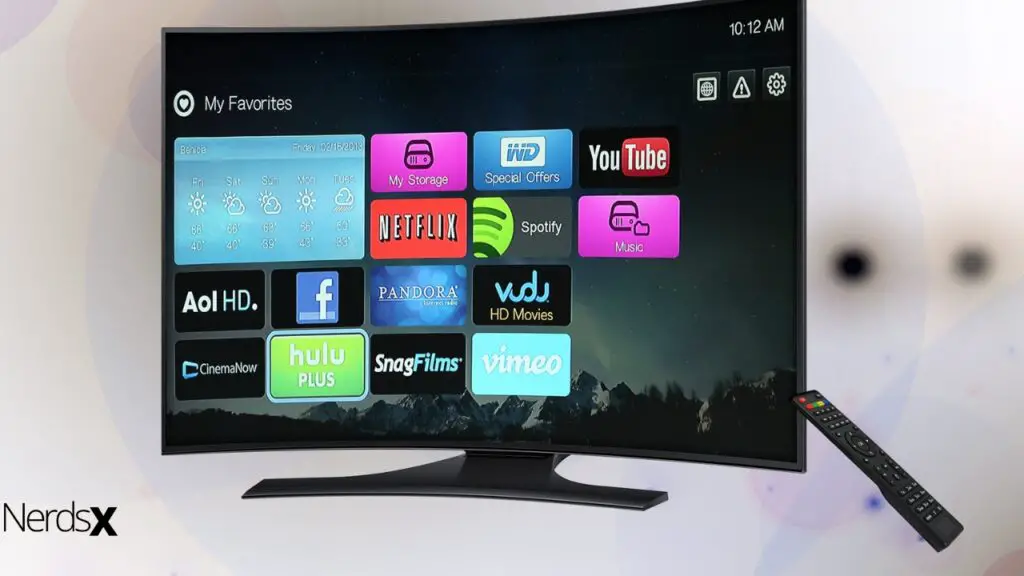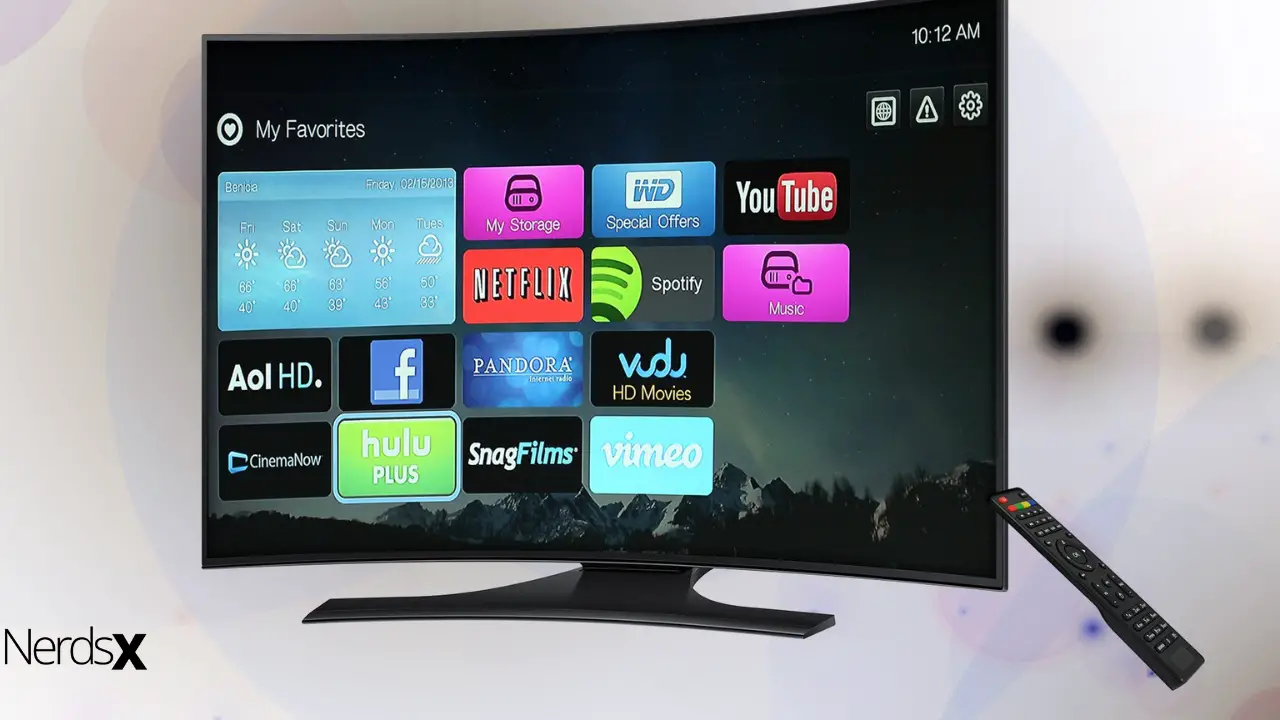If you’ve been wondering, “What size television do I require?” you’ve come to the correct spot. With the price of big-screen TVs dropping and 65 and 75-inch TVs becoming increasingly popular, you might wonder if the Samsung 55-inch 4K TV is too small. For a long time, suggested minimum viewing distances from television were based on standard-definition television and, subsequently, 1080p TV. With these TVs, you needed to be a reasonable distance away from the screen to see individual pixels while viewing.
Higher resolutions, like 4K, are now the standard for most TVs purchased in 2022, so this is less of an issue.
We’ve compiled all of our best advice for picking the ideal TV size for you, your space, needs, and budget. This article will assist you in deciding if a 55 inch 4k Samsung TV is ideal for you.
Is A 55-inch Samsung TV Considered Too Small?
If you want to keep it in a dedicated theater room or a vast space, a 55-inch TV is not too tiny. However, if you’re going to keep it in a room larger than 4.6 x 8m in size, the TV size may be considered small.
If you want to know if a 55-inch TV is too small for you, look at the screen resolution and viewing distance. The recommended viewing distance for a 1080p HD TV is 7ft | 2.14m. The ideal viewing distance for 4K TVs is 3.2ft | 0.98m. A 55-inch TV of the equivalent model may be too small for you if your viewing distance is more significant than either of these distances.
A 55-inch TV is likely to be too small if you intend to use it for many purposes, and the seating distance is more than 7.5ft | 2.28m. Similarly, if the distance between you and the television is more than 5.5ft | 1.68m, you may prefer a larger TV.
How Big Is The 55-Inch Samsung TV?
This question may sound like a no-brainer, but the 55-inch size only relates to the screen’s diagonal length, from the lower left to upper right corner.
You’ll need to account for the screen’s precise width, height, and depth to ensure you don’t get a nasty surprise when you open up your bright new screen.
When you are just considering the screen, the current 4K flagship, the Samsung QN95A, measures 1,227.4 × 706.2 × 25.9 mm (W ×H × D). So, make sure you measure the area in your home where you intend to put the new TV to ensure you have enough room.
Even the inexpensive 55-inch AU8000 measures in at 25.7mm, so that 25.9mm depth is relatively common for most Samsung TVs. However, the type of TV stand included with the screen might throw things off. The QN95A’s central stand will increase the depth to 235.2mm, while the AU8000’s more compact feet will only increase the depth to 228.8mm.
If you’re going to put your 55-inch Samsung TV on a counter, make sure there’s enough area for the stand or feet; if you’re going to place the screen on the wall, make sure the screen can rest reasonably flush against it.
Is It More Important To Have A 4K Resolution Than A Large Screen?
Although it may appear intuitive that a larger screen size equals a better image, this is not necessarily the case. If your TV is too big for your room, you risk missing out on important details, particularly if you sit too near. Compared to a lesser resolution, you will be able to experience more details if you sit near a TV with a higher resolution (such as a 4K).
Should you pay more attention to the resolution when purchasing a new TV?
What Is The Definition Of 4K Resolution?
At least according to most TV manufacturers, 4K resolution is 3840 x 2160 pixels, or 2160p. A Full HD 1080p picture is just 1920 x 1080 pixels. A 4K screen has around 8 million pixels, almost four times your existing 1080p television resolution.
Consider your television as a grid with rows and columns. A full HD 1080p picture comprises 1080 rows and 1920 columns. A 4K picture roughly doubles the numbers in both directions, producing four times the total amount of pixels. To put it another way, you could squeeze all of your 1080p pixels into a fraction of a 4K screen.
The photos are roughly 4,000 pixels wide, thus the name 4K. Before you ask, yes, they named 1080 resolution after the picture height but named the 4K resolution after the image breadth.
Size And Resolution
Large displays with crystal-clear pictures are all the rage in modern technology, but you’ve certainly noticed that when you approach too near to your TV, the clarity fades, and you see a grid of pixels. The image returns to its smoothness if you go backward.�?
The screen resolution – which specifies how many pixels can be displayed horizontally and vertically – comprises millions of these pixels, all firmly packed together on your screen.
The diagonal measurement of a TV screen reflects how big or tiny the TV is. Large TVs with low resolutions are available, as are smaller panels with a high 4K HD resolution.
Although they are becoming increasingly rare, 720p HD TVs with resolutions of 1024 x 768 pixels, 1280 x 720 pixels, or 1366 x 768 pixels are still available. A TV with a 1080p resolution is called Full HD and has a 1920 x 1080 pixels resolution. That is suitable for use with video game consoles, Blu-ray disc players, internet streaming services, and HD terrestrial, cable, and satellite transmissions.
4K Ultra HD TVs are the fastest-growing sector, with a resolution that allows you to sit closer to extremely large displays while still getting a nice, clean picture. The resolution of 4K UHD is 3840 x 2160 pixels, which is four times that of Full HD. Gaming consoles, internet streaming services, satellite broadcasters, and 4K Ultra HD Blu-ray players all use this.
What TV Size Should You Purchase?
If you’re searching for a new television, you might face the temptation of buying the largest model available. While this may be a noble idea on paper, you’ll be shocked at how uncomfortable sitting in front of a TV that is too huge for your viewing area may be.
Fortunately, with a few easy calculations, you can determine the perfect TV size for your room and go for it.
With that out of the way, let’s look at things to think about when choosing the right-sized TV for your viewing environment.

1. It’s All About The Field Of View
According to the Society of Motion Picture and Television Engineers (SMPTE), for most programming, a field of vision of 30º to 40º delivers the best viewing experience.�?
For movie presentations, THX recommends a field of vision of 36º. In 1983, George Lucas helped create THX to set high-fidelity standards for visual mediums such as television and cinema.
If in doubt, stick with 30º, commonly acknowledged and reported as the appropriate temperature for most individuals.
2. Using The Viewing Distance To Calculate Screen Size
The field of view you get is determined by how far away you are from the television. If you know how far you’ll be sitting, you may determine an “optimal” screen size in inches based on that distance. Multiply your viewing distance (in inches) by 0.6 to acquire a 30º viewing angle, or multiply by 0.84 to go closer to a 40º viewing angle.
If you’re seated 60 inches from the TV (about 5 feet or 1.5 meters), a screen size of 36 to 50 inches is ideal.
You may use a similar formula to figure out how far away from a display you should sit if you’re willing to alter your viewing distance dependent on screen size (or are attempting to figure out whether you have enough room to do so). Multiply the diagonal screen size by 1.6 for a 30º viewing angle or 1.2 for a 40º angle.
A 65-inch TV, for example, would have a 30º angle of vision at 104 inches (about 8.7 feet or 2.6 meters) and a 40º angle of view at 78 inches (approximately 8.7 feet or 2.6 meters) (around 6.5 feet or 2 meters).
Size Versus Quality
You’ll have to sacrifice image quality if you’re seeking to maximize screen real state on a small budget. As a result, we recommend establishing a balance between the two variables for long-term pleasure.�?
Consider the smaller 55-inch Samsung TV next to it for $550 instead of the gigantic 65-inch 4K TV from an up-and-coming manufacturer on the shelf for just $500. The Samsung is likely to have a considerably sharper screen and quality, resulting in a much more immersive watching experience, especially when utilizing HDR. Plus, 55 inches isn’t exactly a little screen!
It would help if you also considered the sorts of stuff you’ll be watching. If you’re a Blu-ray fanatic or a 4K streaming aficionado, your HDTV always presents the highest-resolution image. You won’t detect any distortion in the image if your larger TV screen size is closer to 80 inches or if you’ve chosen a 55-inch but are sitting closer to the screen.�?

